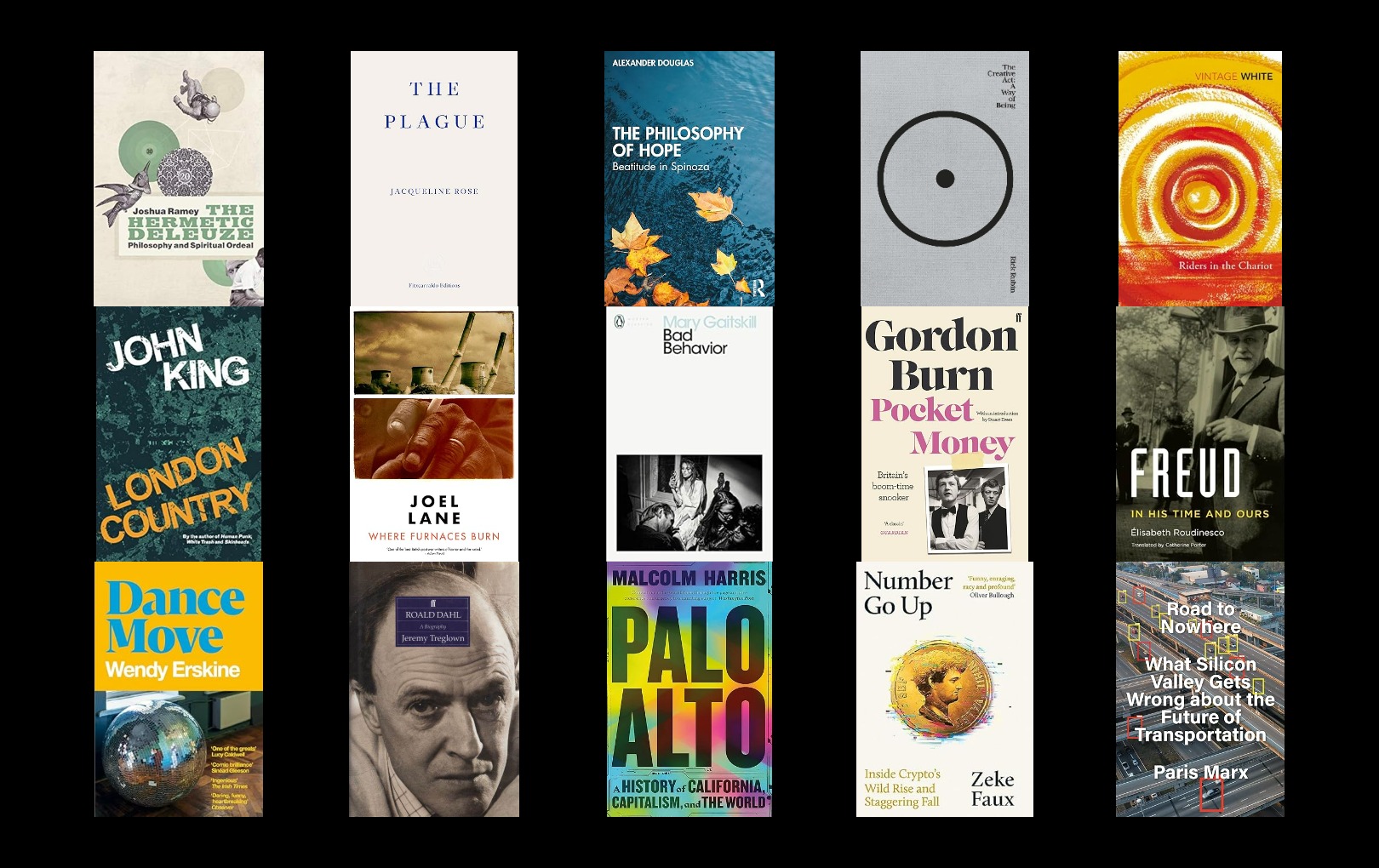
Brad Evans: I Know I Will Never Write a Better Book
If the measure of writing is to get as close as we can to the truth of existence, I know I will never write a
There was a point about four or five years ago, a point I’m not bothered about confirming archivally but which nonetheless definitely occurred, at which football clubs almost uniformly, if you’ll allow the pun, changed the way that they marketed their new kits. Not so long ago, you’d have found a posed shot of a star player rehearsing some fabulous piece of technique or even, where the club had a meagre branding budget, a simple team photograph which could create other revenue streams from calendars and similar items. What superseded these more traditional forms of marketing was a style of image which offers the contemporary student of semiotics much to consider. Now, the background will be an electrolysed Blade Runner gloom, perhaps with little serifs of smoke indicating some recent conflagration or catastrophe. Against this will stand three to five players, one of whom will be a goalkeeper, another a winger or attacking midfielder, and yet another a looming centre half with a backwoodsman’s beard and sleeve tattoos. Their arms are crossed and resolute; they are indomitable. The language used to sell the kits will be pared down to abstraction: ‘[Club Name] 2015 Home Kit: We Are One.’ The general tone is a seriousness so ascetic it detonates into camp, unable to withstand the internal stresses on its structure of plausibility.
Nevertheless, for some it must have the appeal of gravitas or it would simply not work as an incentive to purchase. How, then, can it be explained? First, perhaps, with recourse to a certain type of pop-cultural hetero-masculinity which (re-) emerged in the early twenty-first century, initially – if I had to pick a particular moment – with the success of Peter Jackson’s Lord of the Rings adaptations, but more lately underwritten and refocused with HBO’s preternaturally successful Game of Thrones. In these programmes’ fantasy second worlds
, manhood, if done properly and honourably, is a matter of disenchanted seriousness, a saddened and reluctant understanding of the inherently conflictual nature of existence. Any levity here can only manifest itself as grim irony – one does not simply walk into Mordor, remember – and all time between battles must be occupied with sorrowful renditions of stories of the travails of Good. The bearded, tattooed centre-half on the kit advert, then, is supposed to connote the fantasy version of ordeal, the effect of which is not limited to football’s contemporary image-system. Think, for example, of how car advertising has departed from its nineties staple of secure glamour to its present mood of quasi-military exertion, its stubbled protagonists surging through sodden Scandinavian or Scottish gloom in order not, as the case would once have been, to seduce, but to be reunited with family.
The last item in this chain of images is, of course, the military recruitment film, which has become, after a fashion, more honest and explicit about the danger and brutality of conflict in the period that I’m describing. In Britain, the army are no longer particularly reticent about depicting ‘live’ skirmishes in their propaganda, in part because they suspect that computer games are not far from offering a comparable intensity of experience anyway, but also because of a gathering idea which automatically associates soldiering with virtuousness. Ideally, the film prompting its audience to enlist in the Marines or for the Territorial Army shows a gunfight in Helmand, or on a generically be-jungled ‘African’ coastline populated by similarly generic ‘rebels’, before portraying the hero returning to the family that his actions have (somehow) safeguarded.
What I’m trying to get at here is how advertising aimed at men has undergone an elemental shift in how it desires, and in how it seeks to channel desire. The old, but not really that old, male utopia was one of ease, of frictionless libido cruising through a collage of Eurocentric sophistication, waking in Venice amidst the accoutrements of one erotic encounter and falling asleep in Monte Carlo amidst another’s. This no longer holds: it is perceived, understandably, as inauthentic and insufficiently austere for our times. Instead, the dream-work is of extended periods of sexual and romantic isolation in the still largely homosocial realms of military conflict or extreme exploration, interspersed with brief unifications with family. This is the logic to which football advertising in Britain increasingly appeals.
Clearly, nobody seriously thinks that the players of, say, Scunthorpe United visiting, say, Leyton Orient for an awayday is remotely comparable to a six-month tour of Helmand. Nevertheless, enough sticks from this metaphorical equivalence to make us think that footballers fulfil some kind of existential duty, something which exceeds the rubric of paid work, when they play for a team. It has long been the case that disloyalty has been the most atrocious crime a footballer can commit, but the economic insecurity of the historical moment seems to have amplified the notion that we have particular responsibilities to increasingly local social units. There is something especially interesting here in the way that football clubs now seem to be regarded as ends in themselves on this front, as entities more demanding and deserving of loyalty than the broad communities which they inhabit. One concrete example of the contrasting fortunes of club and community is Liverpool fans’ continuing failure to resist the acts of social cleansing taking place on behalf of the club in the vicinity of Anfield: evidence that This Football Club is regarded as a point of social allegiance in almost direct tension with its area. The player, in this case, is asked to behave as an avatar of that unit’s struggle in an increasingly atomised, conflictual world, and asked to buy wholesale into the ‘values’ of the ‘project’ even when those values and that project are things that have been conjured ad hoc by recently installed owners and managers whose heads have been turned by the jargon of ‘smart thinking’ books and TED talks.
‘Sport is a battle’, then, is the metaphor we are now required to live by as football fans. It came to light in a peculiarly candid way during the predictable period of recrimination following England’s equally predictable early exit from the 2014 Brazil World Cup. Even before the players had set off for home Harry Redknapp, the geezerish and journalist-friendly cockney who had been passed over for the England manager’s job in 2012 because of a pending court case, turned up in the press claiming that a number of English internationals were in the habit of begging their club managers to withdraw them from the national squad for friendly games. The allegation was stark: that some English players regard playing for their country not as an honour, but as an annoyance. England coach Roy Hodgson and his outgoing captain Steven Gerrard cannily took the sting out of Redknapp’s comments by asking him to name names, but the matter did not drop entirely. Former England striker and current light-entertainment go-to Ian Wright wrote in his column in the Sun newspaper that any player found to have shirked international ‘duty’ without good reason should be required to phone the parents of a soldier killed in Afghanistan to explain their decision to drop out.
This was imagined on Twitter in plenty of bleakly funny versions of how the transcript of such a call might read. Palpably, the suggestion was a piece of attention-seeking on the part of Wright, who has never, it seems, got over his early-career rejections or his marginalisation in the 1990s England team by more rounded strikers such as Alan Shearer. However, it spoke to something in England’s present-day ideological make-up, namely a resurgent patriotism of symbols which regards Englishness, whatever that might mean, as somehow under threat. The role the football player takes in this set of beliefs is intriguing. Wright was playing to the idea that the default setting for footballers is a patriotic one, that they feel a sense of pride in national symbols which extends beyond their utilitarian, team-bonding value. By linking this version of patriotic obligation to that of the soldier’s, he insisted tacitly on the relative unanimity of nationalistic sentiment amongst the working-class communities that both footballers and the rank-and-file military are drawn from.

If the measure of writing is to get as close as we can to the truth of existence, I know I will never write a

To accompany his latest piece with Tariq Goddard in The Quietus on True Detective Season 4 and the legacy of In The Dust of This Planet, Eugene

As another turbulent year draws to a close, the Repeater team put forward their favourite reads for the festive season. Publisher, Editor, and Author Tariq

If the measure of writing is to get as close as we can to the truth of existence, I know I will never write a

To accompany his latest piece with Tariq Goddard in The Quietus on True Detective Season 4 and the legacy of In The Dust of This Planet, Eugene

As another turbulent year draws to a close, the Repeater team put forward their favourite reads for the festive season. Publisher, Editor, and Author Tariq
